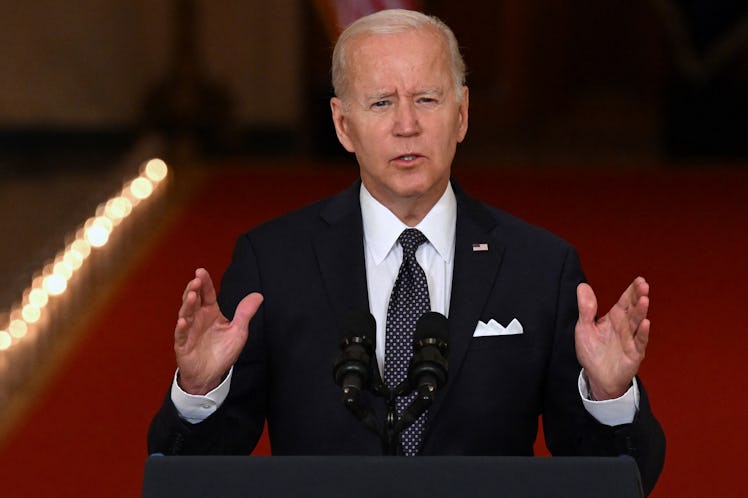Biden Will Soon Sign The Most Sweeping Gun Safety Reforms In Decades
On June 23, the Senate voted on the bill, which passed with a final vote of 65 to 33 — with 15 Republicans joining the Democrats.

On June 23, the Senate passed a bipartisan bill to address gun violence in the country following continued pressure on the federal government after the murder of 19 children and 2 teachers at Robb elementary school in Uvalde, Texas. The bill, once signed by President Biden, will mark the first sweeping gun safety legislation passed in the United States in decades. Here’s what you need to know.
The Senate passes gun safety legislation:
In early June, the House passed eight pieces of gun control measures that were packaged together in the “Protecting Our Kids Act.” The chances of it passing through the Senate were low, given how Republican senators have consistently pushed back on passing any restrictions on gun ownership or safety. Before the legislation could be taken up in the Senate, a bipartisan group of senators announced a much-narrower framework for federal gun control legislation, a move that seemed impossible a few months ago.
On June 23, the Senate voted on the bill, which passed with a final vote of 65 to 33. That number included 15 Republicans who joined the Democrats, according to CNN. The next step, the bill will go to the House for a vote — which it will pass — before heading to Biden, where he’s likely to sign as soon as it hits his desk.
What the gun safety bill will do:
The legislation passed through the Senate differs from the “Protecting Our Kids” act the House passed earlier this month. The bipartisan bill focuses more on safety measures versus actual gun control, focusing on mental health supports and school security interventions. But some critical criteria have been included, particularly the red flag law, the boyfriend loophole, and enhanced background checks.
The Red Flag Law will allocate funds to states to implement laws to temporarily keep guns away from those who pose a threat to themselves or others by the courts. The Boyfriend Loophole will ensure people who have been convicted of domestic violence would no longer be eligible to own a gun, closing a loophole in the language that only protected married people or those living together. And Enhanced Background Checks for gun buyers under the age of 21 to include any juvenile criminal or disqualifying mental health records.
What the gun safety bill won’t do:
While the new gun safety reforms are progressing, some key issues were included in the initial “Protect Our Kids” act that are omitted from the bill — many of which have had a lot of support from Democrat lawmakers and citizens, according to Vox.
The bill does not include a ban on assault weapons and high-capacity magazines like AR-15s. The new safety reforms don’t make it harder to get an assault weapon either. It also does not raise the age to be able to buy a gun from 18 to 21, which was advocated for in both the “Protecting Our Kids” act and in an address from Biden given in May.
It’s important to note that around the same time the new gun safety legislation was passed, the Supreme Court made a ruling in the New York State Rifle & Pistol Association Inc. v. Bruen case, which, as Vox says, is a “devastating decision for anyone who cares about reducing gun violence.”
The court ruling expands the scope of the Second Amendment while at the same time striking down more than ten years of case law that governed how the Constitution permits gun laws. In doing so, it’s severely limited the state’s ability to pass gun control laws. It’s not clear at this time, according to Vox, how or if this will impact the gun safety reforms as it heads back to the House where it will likely pass before landing on Biden’s desk.